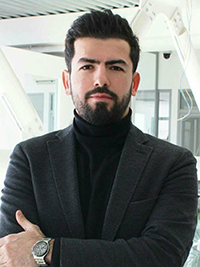Saimir Kristo

XXIX Cycle - (A.A. 2013-2014)
IDAUP
Home Institution: Polis University Tirana
Scholarship
Curriculum: Architecture (ICAR14)
Research Topic: Urban morphology & public spaces
Tutor DA-UNIFE: Nicola Marzot
Tutor Polis University: Antonino Di Raimo
Nationality: Albanian
Email: saimir_kristo@universitetipolis.edu.al
Profile
Biography
PhD in “Architecture & Urban Planning”, Department of Architecture Design, POLIS University, Tirana & University of Ferrara, Italy. Second Level Master of Science in “Applied Design”, POLIS University, 2013. Integrated Master of Science in “Architecture and Urban Design”, “POLIS University, Tirana, 2010” Since 2011 he works and teaches at POLIS University and actually he is the Vice-Dean in the Faculty of Architecture and Design and lecturer of architecture at POLIS University. As an active member of civil society in Albania he is working to engage communities and developing a common platform for discussion in the field of architecture and urban planning. Previously co-curator of Tirana Architecture Week 2014 and general director of Tirana Design Week 2015, currently project manager of Future Architecture Platform for Albania.
Research skills
analytical | comparative | historical | theory | design
Scientific activities
ORCID ID:
0000-0003-0982-6899
IRIS UNIFE ID:
rp00000
Doctoral research
Urban Catalysis-A theoretical framework for the urban development of public space in Albania
The city and the concept of public space has been evolved during the last centuries. Most of the successful public spaces of today are made, envisioned, designed, and realized not as sole entities, but as integrative components of an organism. The notion of what makes a successful public space is a topic worth investigating in the urban framework. What can this describe the present, even about future urban space? As architects we need to go beyond movement to think about what growth, expansion, and contraction can influence the urban tissue. Due to its complexity, the evolution of cities is something that is difficult to predict and planning new developments for cities is therefore a difficult task. This complexity can be identified on two levels: on a micro level, it emerges from the multiple relations between the many components and actors in cities, whereas on a macro level it stems from the geographical, social and economic relations between cities. According to Attoe and Logan, the notion of Urban Catalyst is an attempt to reopen the debate on strategies and tools to activate and rethink urban space and city development. This research would attempt to examine the significance of the urban catalyst as a means of urban revitalization. Bohannon, (Bohannon, 2004) states that the urban catalyst theory can be linked to place through the study of contextual factors in urban design. These factors include morphological, social, functional, perceptual, visual, and temporal points of view. or the urban catalyst to respond to its setting, it also must possess a strong sense of place and authenticity. The methodology that will be applied will undertake an analytical process in order to understand future strategies for development and regeneration of urban public spaces in cities.
Keywords
urban | morphology | catalysis | public | space

